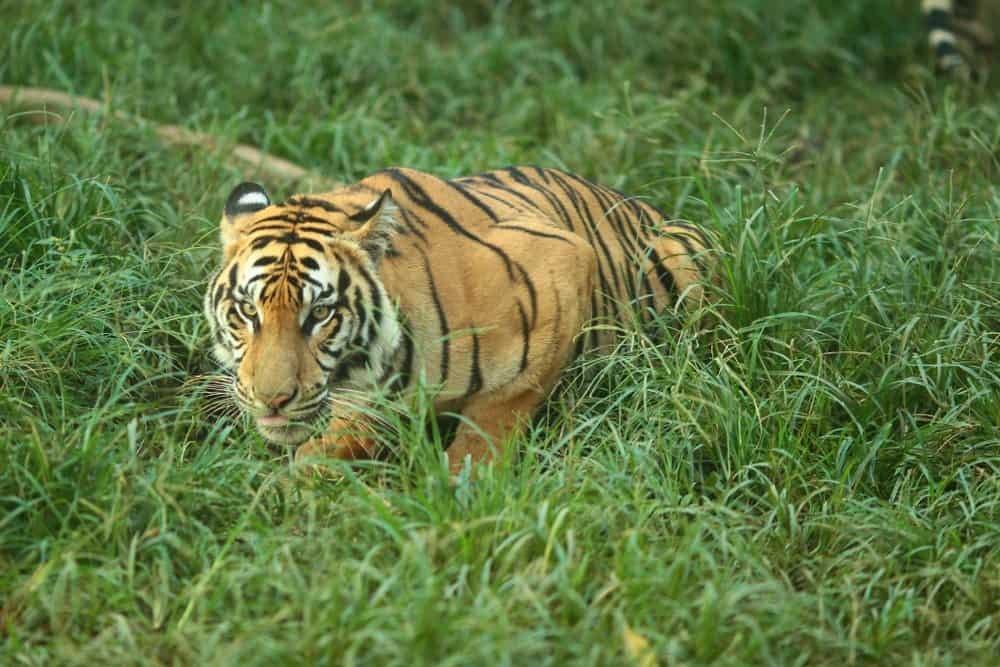Have you ever wonder How Many Javan Tigers Are Left In The World? The Javan Tiger (Panthera tigris sondaica) was once one of the most widespread tiger subspecies, inhabiting large areas of Southeast Asia. However, due to human activities such as habitat destruction and poaching, their population declined drastically throughout the 20th century.
The Javan Tiger is a now extinct subspecies of tiger that adapted and evolved to live on the island of Java in Indonesia. Today only the Sumatran tiger remains, hanging on by a thread and critically endangered.
Table of Contents
How Many Types Of Javan Tiger Species Are There?
There was only one known subspecies of Javan Tiger, the Panthera tigris sondaica. However, due to their extinction in the 20th century, there are no longer any living Javan Tigers in the world. The last confirmed sighting of a Javan Tiger was in the 1970s and it is believed that they became extinct sometime during that decade.
What Led To The Extinction Of The Javan Tigers?

The primary cause of the extinction of the Javan Tiger was human activities. As the population in Java grew, the demand for land and resources increased, resulting in deforestation and habitat destruction. This meant that the tigers had a smaller and more fragmented range to live in. Additionally, they were hunted by humans for their body parts which were believed to have medicinal properties in traditional medicine.
Furthermore, Javan Tigers also faced competition and conflicts with other large predators such as the Asiatic lion and leopard, which were introduced to Java by humans. This further reduced the tigers’ population and put them at risk of extinction.
Historical Trends Population Of Javan Tigers
There are the population history of Javan tigers according to centuries:
How Many Javan Tigers Were There In 18th Century?
The first recorded population estimate of Javan Tigers was in the late 1800s, with an estimated number of 1,000 individuals. This rapid decline was mainly due to poaching and habitat destruction.
How Many Javan Tigers Are Left In The World From 19th To Current Century?
In the early 1970s, it was estimated that there were around 300 Javan tigers left in the wild. By the late 1970s, that number had dropped to around 50 individuals. And then, in the early 1980s, there were only an estimated 25-30 Javan tigers remaining.
Sadly, the last confirmed sighting of a Javan tiger was in 1979 and since then there have been no confirmed sightings in the wild. In 1994, the Javan tiger was declared extinct by the International Union for Conservation of Nature (IUCN).
How Javan Tigers Are Endangered?

The Javan tiger became endangered due to a combination of factors such as habitat destruction, poaching, and competition with other predators. These threats were intensified by the growing human population in Java and the lack of conservation efforts.
Additionally, the small population size of Javan tigers also made them more vulnerable to genetic problems, which could have further contributed to their decline. Overall, the extinction of the Javan tiger serves as a reminder of the catastrophic impact that human activities can have on an entire species. It also highlights the importance of conservation efforts in protecting and preserving endangered animals around the world.
The Impact Of Climate Change On Javan Tiger Population
While the primary cause of Javan tiger extinction was human activities, climate change may have also played a role. Rising temperatures and changes in weather patterns can affect an animal’s habitat and food sources, making it even more challenging for them to survive.
Moreover, climate change can also lead to an increase in natural disasters such as floods and wildfires, which can further disrupt the tigers’ already fragile habitat.
Was Any Conservation Efforts Occur For Javan Tigers?

Efforts to conserve the Javan Tiger were not made until it was too late. In 1936, the Dutch colonial government of Java created a wildlife reserve in hopes of protecting the remaining Javan tigers. However, this effort came too late as there were already fewer than 50 individuals left at that time.
In the mid-20th century, an American zoologist named Dr. Peter Jackson conducted surveys and research on Javan tigers, raising awareness about their endangered status. However, conservation efforts were still lacking until the 1960s when the Indonesian government implemented stricter laws against poaching.
Sadly, these efforts were not enough to save the Javan tiger from extinction. Today, there are ongoing conservation efforts for other subspecies of tigers, such as the Sumatran tiger. It is crucial to learn from the mistakes made in the past and take immediate action to protect and preserve endangered species before it’s too late.
What Can Be Done To Protect Endangered Species Like Javan Tigers?
The extinction of the Javan tiger serves as a cautionary tale for the fate of other endangered species. However, it is not too late to take action and protect these animals from facing a similar fate. Some steps that can be taken include:
- Implementing strict laws and penalties against poaching and illegal wildlife trade.
- Preserving and restoring natural habitats for these animals to thrive in.
- Educating the public about the importance of conservation and the impact of their actions on endangered species.
- Supporting organizations that work towards protecting endangered animal populations.
While it is too late for the Javan tiger, we can still learn from its extinction and work towards a better future for other endangered species.
Final Thoughts
There are no living Javan Tigers left in the world. The last confirmed sighting was in 1979 and they were declared extinct in 1994. The decline and eventual extinction of the Javan tiger is a tragic reminder of the devastating effects of human activities on wildlife. It serves as a warning for us to take action and prioritize conservation efforts to prevent other species from suffering the same fate. Let us learn from the past and work towards creating a better future for all living beings on this planet.
Read Also: How Many Siberian Tigers Are Left In The World?





